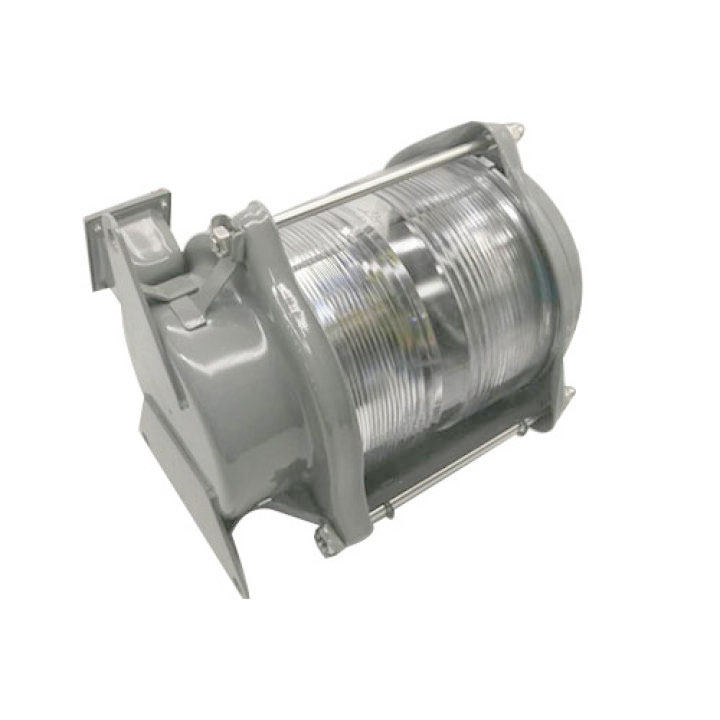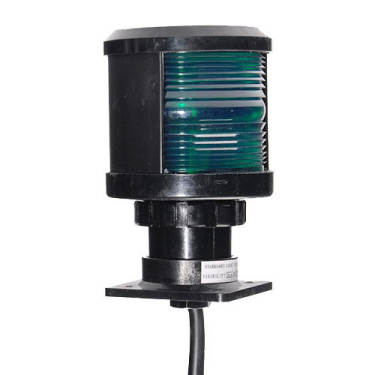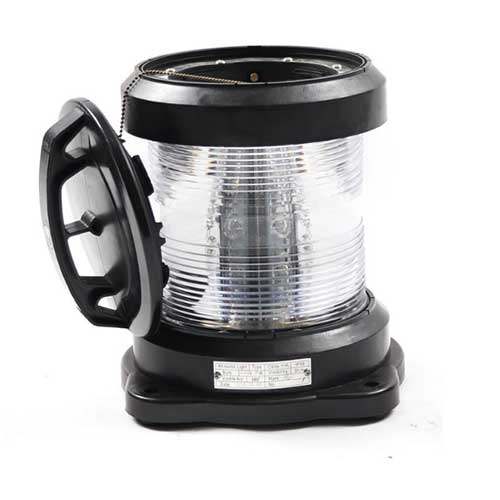How Navigation Lights are Used for Enhancing Maritime Safety
Navigating the immense and often treacherous expanse of the world’s oceans has been a problem for ages. The maritime sector prioritizes the safety of ships, crew, and cargo, and one critical component of this safety is the usage of navigation lights. These marine navigation lights are critical for avoiding collisions, safely navigating vessels through congested waterways, and keeping order on the high seas. In this post, we will look at how navigation lights help to enhance maritime safety.

What are Navigation Lights
Navigation lights, also known as running lights, are specialized lighting systems that are fitted on all vessels, from little pleasure craft to enormous cargo ships and oil tankers. Navigation lights provide two main functions.
Collision Avoidance
Mariners can use navigation lights to assess the direction, size, and kind of an incoming vessel. This data is crucial for preventing collisions since it allows ships to take evasive action when necessary. Different types of watercraft use different light combinations to indicate their condition and direction of movement.
Position Indication
Navigation lights also assist ships in determining their relative position in reference to other vessels. Mariners can determine if they are on a collision course or safely passing each other by examining the lights on nearby vessels.

What are commonly used Types of Navigation Lights
The International Maritime Organization’s (IMO) International Regulations for Preventing Collisions at Sea (COLREGs) mandate the use of navigation lights and define their configurations.
Masthead Light
This is a white light positioned at the forward end of a vessel, usually at the mast’s tallest point. It is visible from the front and sides and signals the presence and direction of the vessel.
Port (Red) and Starboard (Green) Lights
These colored lights are located on the vessel’s left (port) and right (starboard) sides, respectively. These lights are critical for identifying a ship’s course.
Stern Light
A white light at the vessel’s stern (rear), visible from behind and within a 135-degree arc on either side. It aids other vessels in determining a ship’s movement direction and relative position.
Towing Lights
Additional lights are displayed on tugboats and vessels pulling other items, such as barges, to indicate their towing configuration and length.
Special Lights
Certain types of vessels, such as pilot boats, fishing vessels, and vessels restricted in their ability to maneuver, display unique lights to communicate their status and intentions.

What are Various Strategies Using Navigation Lights for Enhancing Maritime Safety
Navigation lights are a crucial component of maritime safety, and all sailors must understand and utilize them correctly.
Firstly, we learn some basic information about COLREGs
What are COLREGs
The International Regulations for Preventing Collisions at Sea, or COLREGs, are a set of international laws and regulations that govern vessel safety and collision prevention at sea. The International Maritime Organization (IMO), a specialized body of the United Nations responsible for global shipping regulation, formulated and maintains these standards. COLREGs’ principal goal is to increase maritime safety by developing a uniform set of rules and procedures for vessels to follow when navigating in all sorts of waters.

Various Strategies and Initiatives
Adherence to COLREGs
Adherence to the International Regulations for Preventing Collisions at Sea (COLREGS) is the foundation of navigation light safety. These laws standardize navigation light arrangements, ensuring that vessels all across the world employ consistent lighting patterns to properly convey information.
Proper Use and Maintenance
It is critical to ensure that navigation lights are properly fitted, well-maintained, and in good operating order. Regular inspections and maintenance procedures aid in the prevention of equipment failures that could jeopardize safety.
Clear Visibility
Visibility is critical for navigation lights to function properly. Using clean and undamaged light fixtures, ensuring that lights are not obstructed by cargo or equipment, and replacing worn or faded lenses on a regular basis are all strategies for improving visibility.
LED Technology
Many modern vessels are switching to LED navigation lights due to their energy efficiency, longer lifespan, and brighter illumination. LED lights offer improved visibility and are less prone to malfunction compared to traditional incandescent lights.
Backup and Redundancy
A good safety technique is to have backup navigation lights and power sources onboard. These backups ensure that vessels can continue to display their required lights in the case of a primary light failure or power outage.

Training and Awareness
Members of the crew should be well-versed in the use and interpretation of navigation lights. Raising awareness of the importance of navigation lights and their role in collision avoidance aids in ensuring adequate compliance and comprehension.
Automated Light Control Systems
Some ships have automatic light control systems that modify the intensity and angle of navigation lights based on a variety of factors such as visibility conditions and vessel speed. These systems enhance visibility and conserve energy.
Advanced AIS Technology
Automatic Identification System (AIS) technology is becoming increasingly integrated with navigation lights. AIS transponders broadcast a vessel’s identity, position, and course, providing real-time information to other vessels equipped with AIS receivers.
Enhanced Light Synchronization
Coordination of navigation light patterns with traffic movement can improve safety on congested rivers and ports. By ensuring that containers in close proximity have similar lighting settings, synchronization can help prevent confusion.
Dynamic Positioning Systems
Some modern vessels have dynamic positioning systems, which automatically control the location and direction of the vessel. These devices can help guarantee that navigation lights are constantly pointing in the right direction, increasing visibility.
Incorporating LED Light Bars
LED navigation lights are employed aboard many modern warships due to their energy efficiency, longer lifespan, and better illumination. LED lights are more visible and less likely to fail than standard incandescent lights.

Integration with Bridge Systems
Modern bridge systems frequently combine navigation light control, AIS data, and radar data on a single display. This integration allows for improved situational awareness and easier monitoring of other vessels in the vicinity.
Continual Assessment and Improvement
Maritime operators should evaluate their vessels’ navigation light systems and safety practices on a regular basis. This entails keeping up with improvements in navigation light technology and regulations, as well as updating equipment as needed.
Conclusion
Navigation lights are an essential component of maritime safety because they enable vessels to communicate their presence, status, and intentions to one another. Mariners can navigate the world’s waterways with confidence, limit the risk of collisions, and protect the safety of their crew, cargo, and the marine environment by complying to international laws controlling navigation lights.


